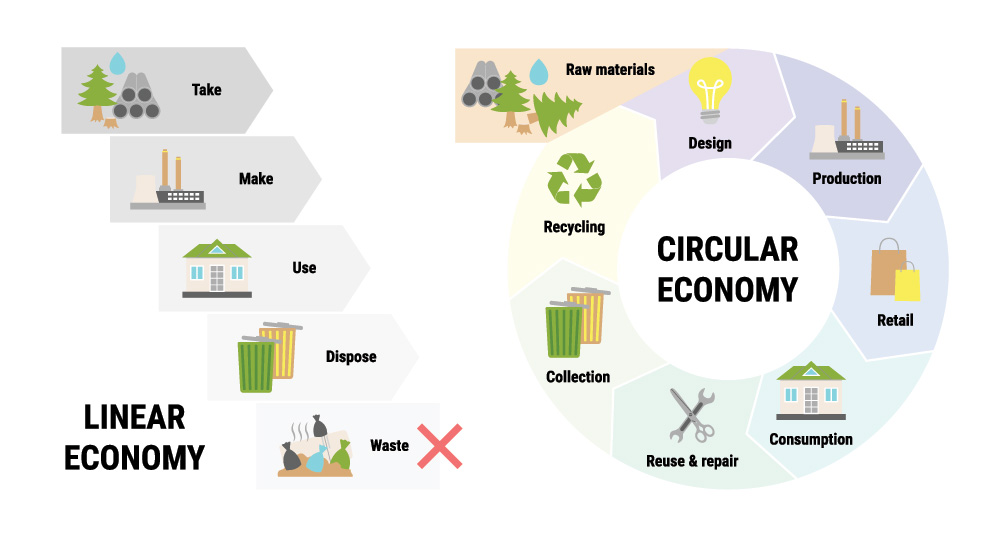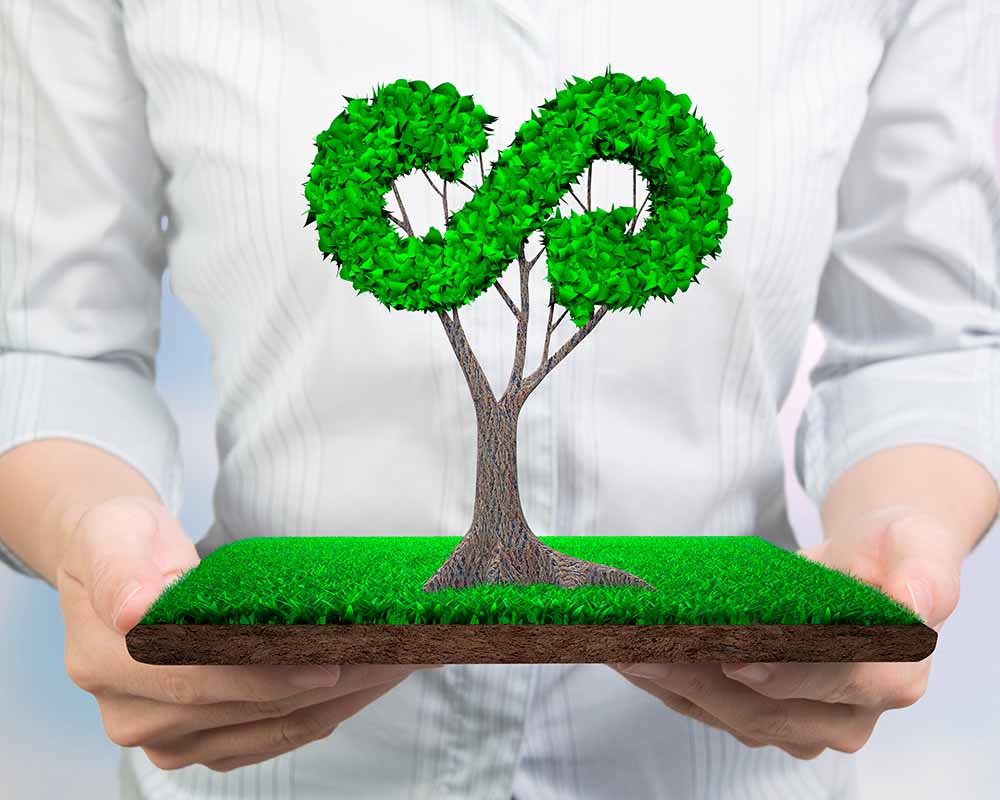In 2021, actor Nathalie Kelley of Dynasty and The Fast and The Furious fame undertook the #NoNewClothes challenge for an entire year. She reused her clothes and rented or bought second-hand garments, but refused to purchase anything new. In an article for Remake, she spoke about why she embarked on this challenge, “The fact that my consumption habits were contributing to our current climate crisis was a particularly hard truth for me to swallow."
Kelley isn’t the only celebrity making strides in this aspect. Katie Holmes and Bella Hadid have candidly admitted to renting designer wear, Kendal Jenner and Naomi Watts use a bike-share service, and Leonardo DiCaprio has decided to forego using private jets (if he can, we can!).
Essentially, what all these celebrities are contributing to in a small way, is the circular economy. “The current economy that we all subscribe to and understand best is the linear economy,” says Girish Jai, green warrior and sustainability manager at an Indian university. “In the linear economy, we buy something – that costs time, energy, effort, and material from the earth and its people, then we use it, and finally we throw it away when we’re done with it, therefore creating waste. In a circular economy, we try to avoid creating waste. Everything is reused and put back into the supply chain. But for us to make a complete shift, the process first has to begin at the manufacturing stage. We need to review the kind of products we make, what kind of energy we use to make them, what kind of waste we generate as a by-product, what components we use, what packaging is employed, and so on. The circular economy is slowly being seen as an alternative to the linear economy, because it helps to tackle pressing issues such as pollution, excess waste generation and biodiversity loss. In other words, it is gentler on the environment and the planet. Instead of buying and owning everything you need (or don’t!), think of renting, borrowing, mending, refurbishing or recycling."

According to The World Bank, the average person globally produces 0.74 kgs of waste every single day, but the range is huge – from 0.11 to 4.54 kgs. However, a report by IBEF (India Brand Equity Foundation) throws up a silver lining. “By 2030, India is expected to be the world's third-largest economy, accounting for approximately 8.5 per cent of the global GDP. The circular economy has the potential to fuel India's growth while also providing significant environmental benefits, making a sustainable and resilient framework. The recycled Polyethylene Terephthalate (PET) plastic industry in India is estimated to be worth around US$ 400-550 million, according to National Chemical Laboratory (NCL) and PET Packaging Association for Clean Environment (PACE). In India, PET is recycled at a rate of 90 per cent, which is higher than in Japan (72 per cent), Europe (48 per cent), and the United States (31 per cent).”
The term ‘circular economy’ was coined (not surprisingly!) by a woman, Dame Ellen MacArthur, who became the fastest solo sailor to sail around the world in 2005. She spent 71 days alone at sea, with just her boat, limited food, fuel and other supplies that she’d taken along with her. This brought to her the realisation that the world is no different, and can only provide us with a finite set of resources, which we are depleting at top speed. In 2010, she came up with the concept of a circular economy and has since set up a Foundation to promote the idea across the globe. The Foundation estimates that by adopting a circular economy in India, the country will benefit annually to the tune of Rs 40 lakh crore ($624 billion) in 2050 and reduce GHG emissions by 44 per cent.
“When we purchase a product, we don’t put much thought into it,” says craft revivalist Shraddha Singh, who works with artisans to retail handcrafted saris, dupattas and stoles. “If the price is right, and doesn’t make a significant dent in our wallets, we buy and don’t mind it if the product has to be discarded after a few weeks or months. Fast fashion is a major contributor to the movement. Take a look at the landfills, and you’ll know what I mean. When we use handlooms and create garments in tandem with artisans, resources are used more efficiently, energy consumption is lesser, and carbon emissions are controlled. The circular economy is essentially based on these principles. Also, we tend to use these longer, since they never go out of style, and even pass them on as heirlooms. Yes, you may have to pay a slight premium for slow fashion in terms of price, but this isn’t just going into environmental benefits or a circular economy – it also provides fair wages and better working conditions to the people who create them.”

One of the key challenges of creating a truly circular economy is dealing with e-waste. Mobile phones, refrigerators, washing machines, computers, and all other electronic accessories are discarded once they are beyond repair. Batteries are constantly being thrown away as well. The key to resolving this, is really at the design stage, with products and components that are created for a longer shelf life, which can be recycled and put back into the economy. Even solar panels and wind turbine blades have a shelf life and will eventually come off; so even the most environmentally conscious and well-intentioned among us will contribute to landfills. Some manufacturing companies across sectors have already started focussing on these aspects, but there is a long way to go before the products that we use can truly be kept around for a long, long time. Until then, it is up to us to be responsible consumers and think before we buy or discard a product that could disrupt the circular economy.